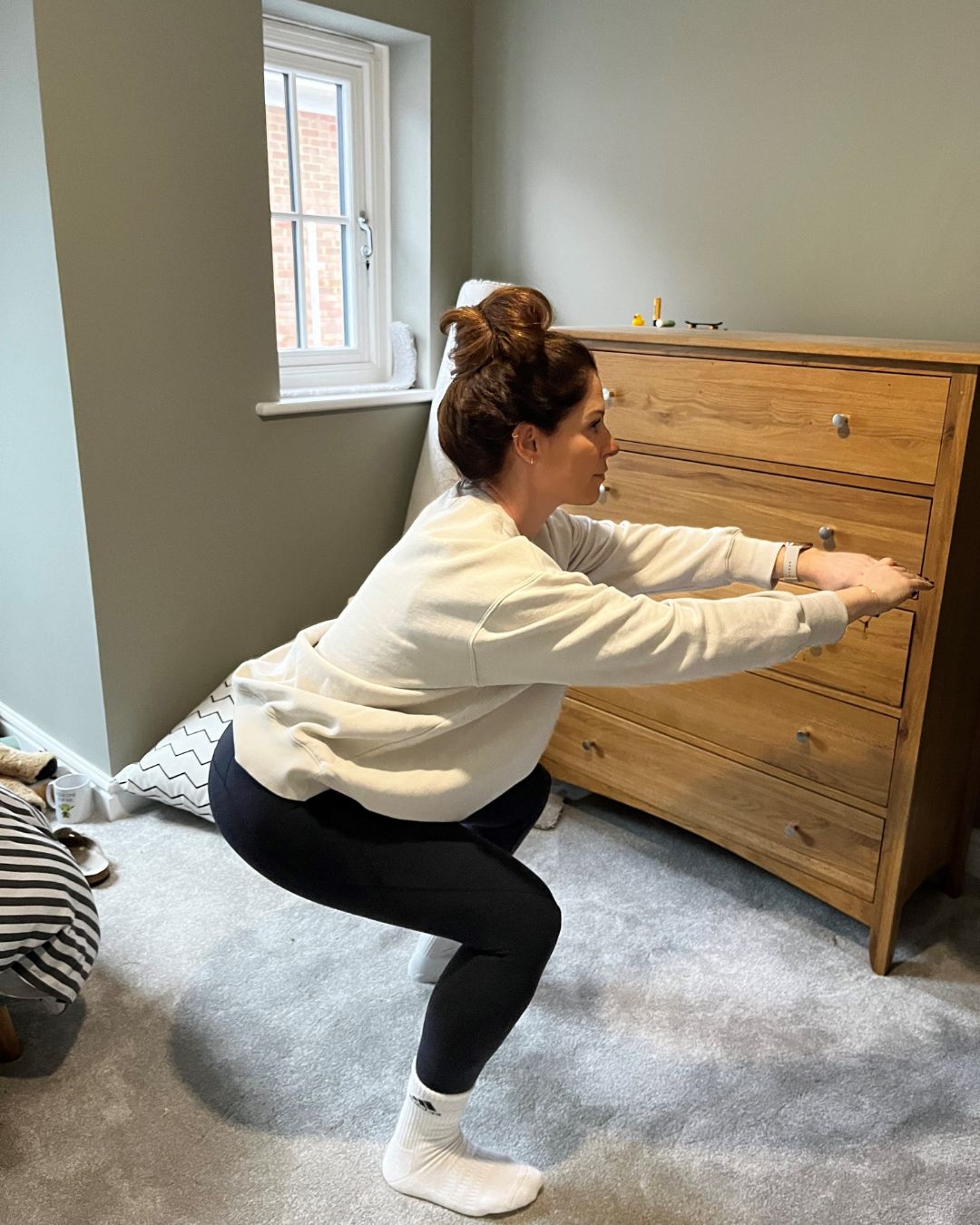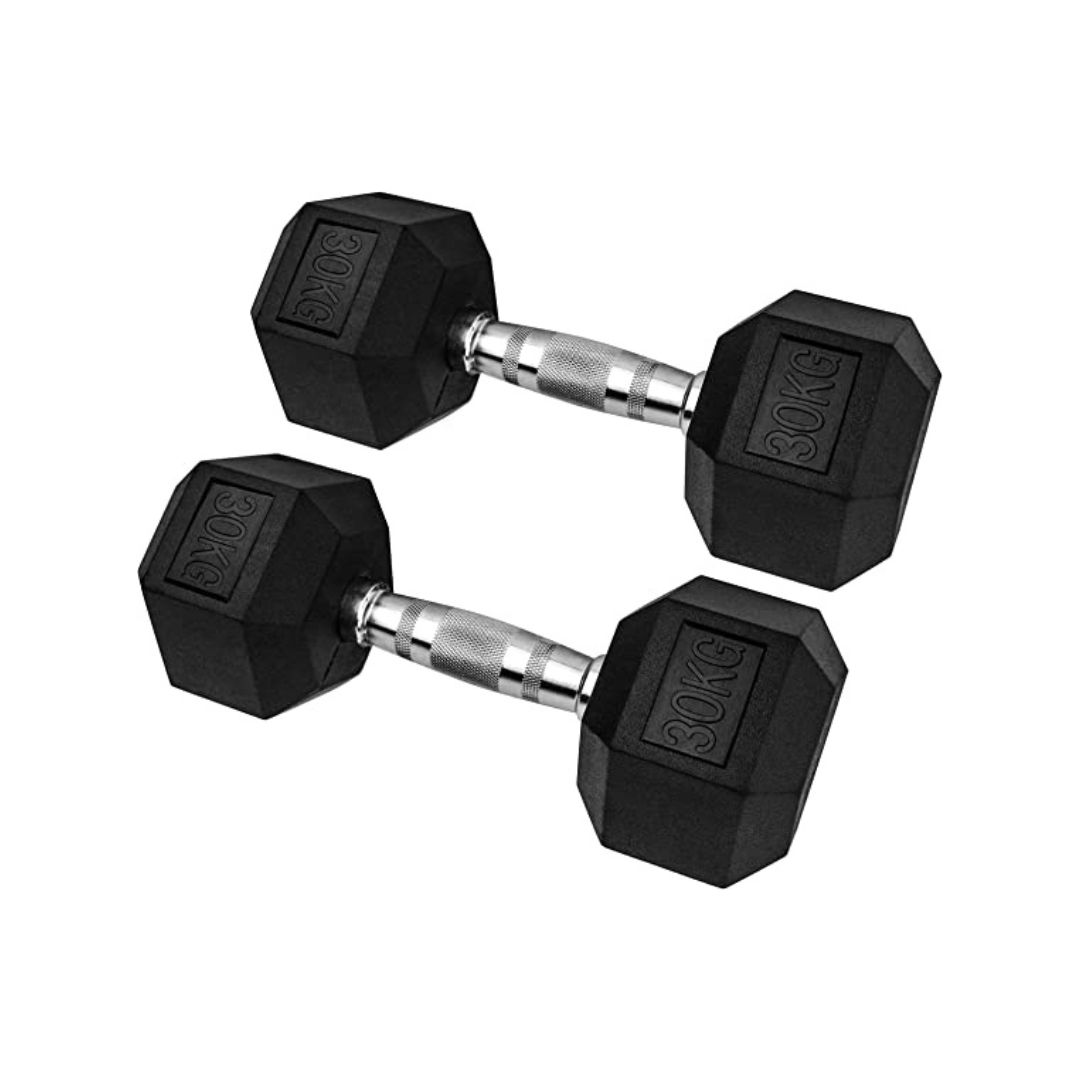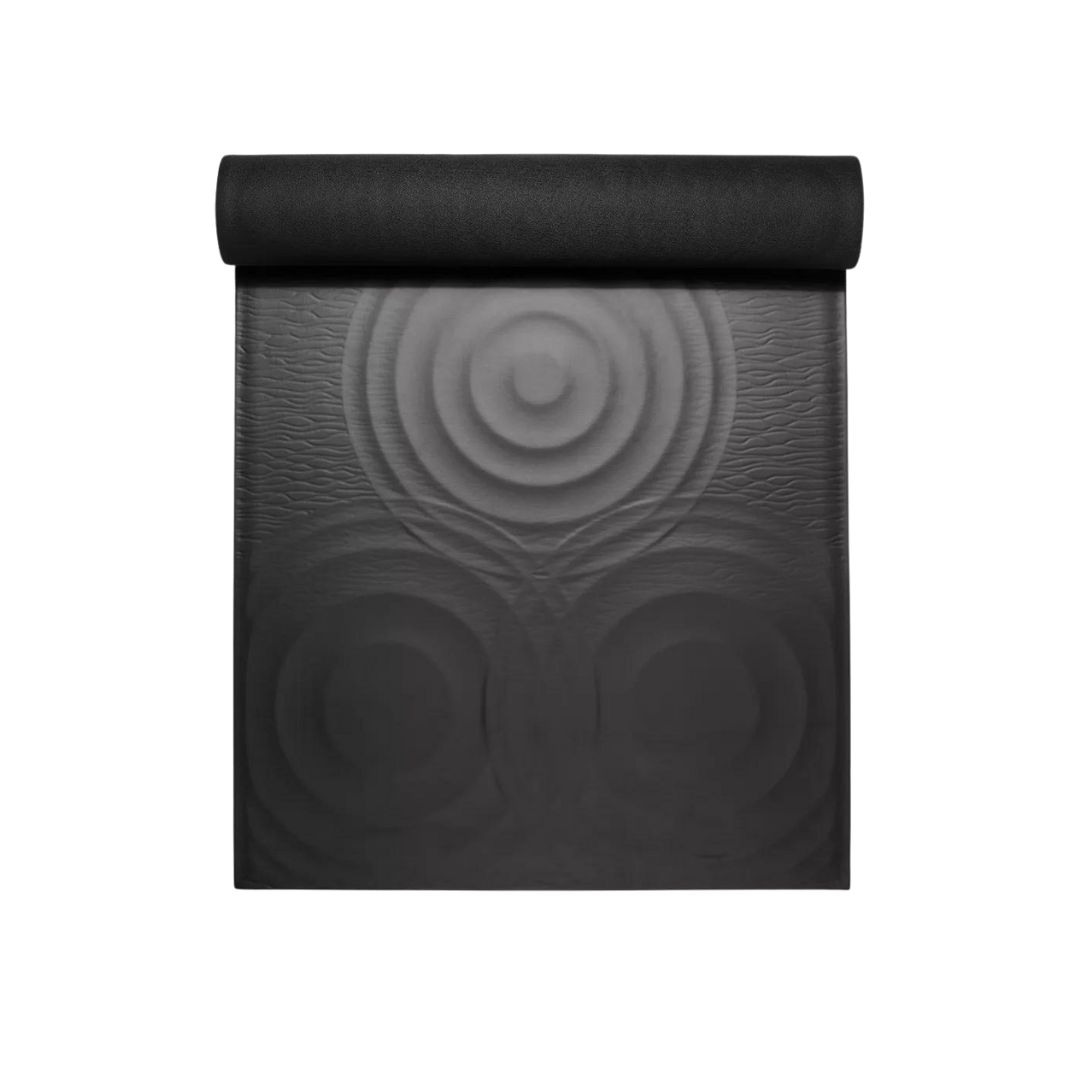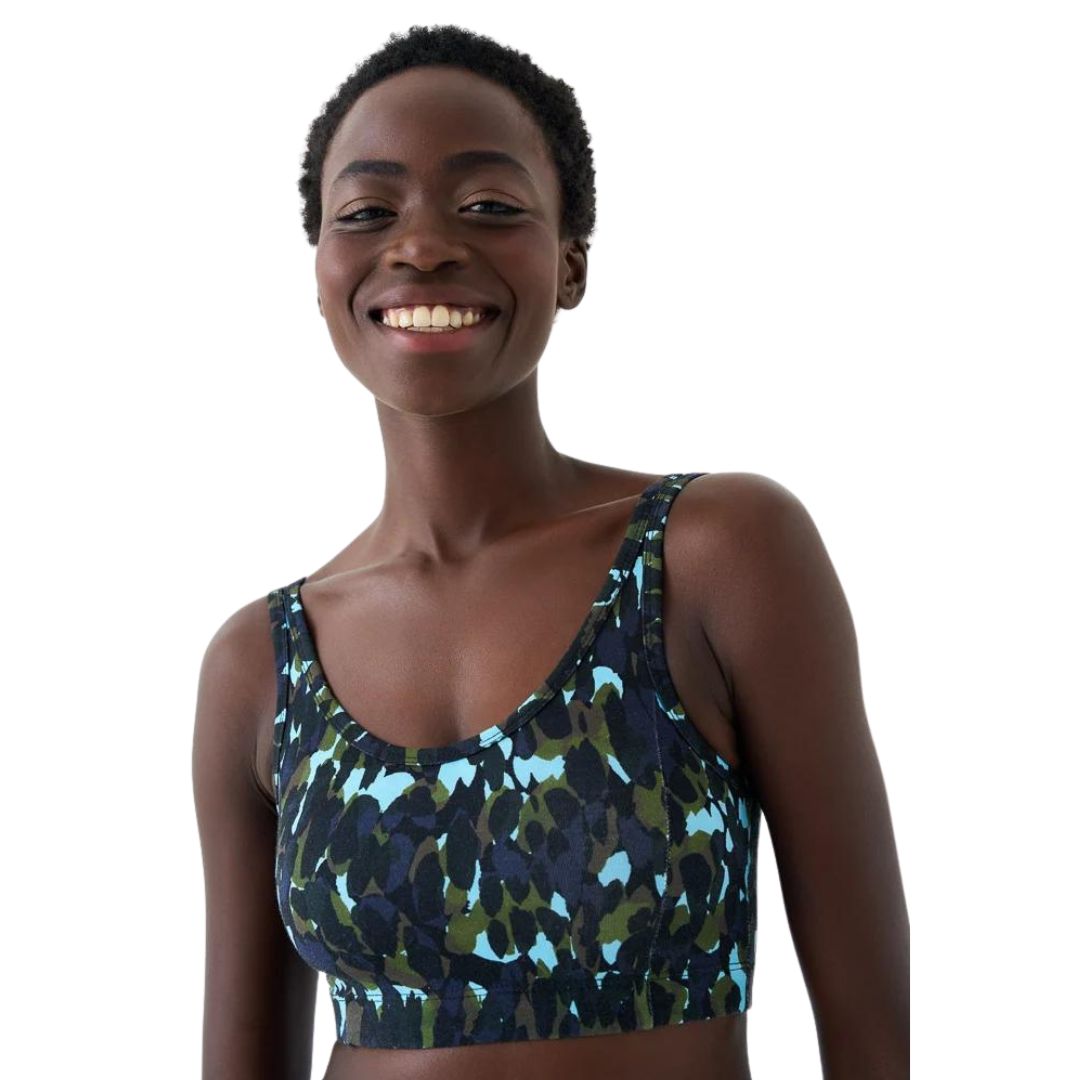Bodyweight squats are one of the most popular workout moves RN - I tried them every day for a week
Keen to squat your way to a stronger body?


Hands up if your workout routine can get stale and, well, boring sometimes? Yep, me too – and I don’t cope well with boredom. So recently, as my motivation to work up a sweat began to wane, I knew it was time to mix things up a bit. And what better way to challenge myself than with a move it’s fair to say I have a love/hate relationship with: the bodyweight squat.
Why would I set myself a challenge to squat every day for a week, you may ask? While it's a fairly straightforward move, the humble squat has a lot going for it, fitness-wise. Mastering a squat is a staple of a solid weight training regime – you’ll find that most strength workouts feature at least one kind of squat. One of the so-called "big five" compound exercises, squats are fundamental to building stronger quads, glutes and hamstrings, not to mention core. And did we mention balance and flexibility?
So, when it came to thinking of ways to help me regain my fitness mojo, I knew I couldn’t go too far wrong with a week of squats. And you know what they say – a change is as good as a rest. While this isn’t strictly true when it comes to working out - rest is a crucial part of a balanced workout regime - it is a fact that cross-training is great for you, so switching up my usual routine to include a move that’s simple and free to do at home was a no-brainer.
Read on to find out how my squat challenge went – and you might want to take a look at our guides to strength training for beginners, low impact strength training, and how to make strength training at home the most effective, while you're here. Don't miss how MC UK Senior Health Editor Ally Head got on trying strength training every other day, too (spoiler alert: she loved it).
I tried bodyweight squats every day for a week - here's how I got on
What are squats?
If you're wondering what a squat even is, for the uninitiated, just imagine you’re about to sit down on a low chair.
“Squats are a compound exercise that involves bending the knees and hips while lowering the body into a sitting position and then returning to a standing position," explains personal trainer Beth Davies. “They engage multiple muscle groups and are considered a fundamental movement in strength training.”
As fitness challenges go, I picked one of the simplest moves to perform. That said, there are ways you can level up the basic squat, by adding weights, lunges or jumps – but for the purposes of this experiment, I’m sticking with the trusty bodyweight squat.
Celebrity news, beauty, fashion advice, and fascinating features, delivered straight to your inbox!
What are the benefits of squats?
There’s a myriad of benefits to incorporating squats into your exercise routine – and the chances are, if you’ve ever done any form of strength training, you’ll be pretty familiar with them. The squat is a multi-joint move that strengthens the quads, hamstrings, glutes and hip, as well as engaging your core for improved stability.
“There are so many benefits from adding squats into your fitness routine, especially as it's a movement pattern you require for daily tasks - think picking objects off floor, lifting correctly, and even sitting down in a chair or toilet and standing up again,” says Davies. “By building strength in your lower body and core, your future self will thank you - it enables you to stay mobile and independent.”
As well as future-proofing your body, squats can be an easy and simple way to break up prolonged periods of sitting - something that researchers at the University of Leicester have shown puts you at greater risk of developing chronic diseases like type 2 diabetes and cardiovascular disease. If you're into exercise snacking - that is, short, sharp bursts of movement sprinkled throughout your day - it's a great option. Davies advises incorporating a few squats for every half an hour of sitting.
If you’re a runner or spin fan, squats are also great for counteracting the risk of injury from over-training. Want some cardio mixed into your strength training? Squats are your fitness BFF. Add some jumps onto the end of your squat and voila – it’s a cardio burn, too.
How to do a bodyweight squat with correct form
According to Davies, it's as simple as thinking you're about to sit down on a low chair.
Start by pushing your hips back and bending at the knee. Then, begin lowering your glutes towards the floor. Make sure to keep your knees over your feet and push into them to make sure they don't cave inwards. Holding your arms wherever you feel comfortable, push through your legs to return to your original standing position. And repeat.
Form is important, so if you're not sure if you're squatting correctly, do watch a the YouTube tutorial below or ask a PT at your local gym for guidance.
I tried bodyweight squats every day for a week – here’s how I got on
Days one to three
To begin with, I asked Davies how many squats I should be aiming for each day to see results. Despite thinking of myself as pretty active, we decided to start off with three sets of 15 squats - and I was surprised to find that I found it trickier than I’d anticipated. Perhaps it was the pure focus on one move, or maybe it was knowing I had to complete a certain number of reps – whatever the reason, I noticed every little twinge and click (hello, tight hip flexors) as I moved.
So much so, that I decided to tweak my form after day one by adding a heel raise. “Elevating the heels while you send your hips backwards into your squat takes all pressure off the knee as you load up into your glute,” advises personal trainer Nicole Chapman. “Try using some books or a pair of dumbbells to raise your heels while having your shins and knees facing forwards as a knee-friendly option.”
Knee strain resolved, by day three I was able to add a few more reps in, building up to twenty at a time. Unexpectedly, my heart rate started to elevate around the 10-squat mark – a lot sooner that I’d thought it would, making them challenging enough to feel like an actual workout – something I’d naively not thought about.
And the squats proved as beneficial to my mindset as they were to my leg strength. Interspersing my day with these fitness snacks made me feel energised and motivated – I was able to stick to my usual regime of Barre, spin, running and strength in addition to the squat challenge.

Anna on day three of her squat challenge
Days four to seven
Perhaps it was a placebo effect, but I swear sprinting up the stairs at home felt easier, and I definitely managed to go harder for longer in my spin class this week. Whatever the cause, I’m taking it as a win. I was delighted that I found the squats so easy to fit into my routine, even doing them while brushing my teeth in the morning and evenings, meaning however frantic my day got, I knew I’d done at least some movement.
My form has improved, too – I’ve found a narrower foot position works best for me, while I also worked out that increasing how long I held the squat for (known as time under tension) was a simple way of upping the ante on the days when I felt up for more of a challenge.
By the end of the week, squatting my way through my day has become second nature, and while I wouldn’t say the movement has got easier (there’s always ways to level up so you feel you’re consistently challenging yourself), my joints feel more fluid, less "clicky", and I’m sinking into a deeper squat with ease.
Will I continue doing bodyweight squats every day? You know what - I think I will, and I wasn’t expecting to say that. I’m loving that no matter how busy I get, I can fit in some squats. The loos on a night out might not be the most glamorous location, but I figure my body doesn’t know the difference (and it certainly prompts some interesting conversation!).
My main takeaway from this week? Fitness doesn’t have to be complicated. As a Health Writer, this is something I’m constantly espousing. Some movement is always better than none, and this week, I’ve really found this to be true. In one of the busiest weeks of the year, I’ve managed to feel as though I’m keeping up my fitness levels simply by jumping into some squats periodically.
After all, the most effective workout is the one we actually do, so the squat challenge has ticked all my boxes. My advice? Give it a try – your body will thank you for it.
Shop MC UK's go-to workout kit now:

These dumbbells are a firm favourite of MC UK Health Editor Ally Head. Having first invested in them in lockdown, she's used them on repeat ever since. Why does she like them so much? They're affordable, as weights go, but high quality, too. Just what you need to smash those home workouts.

Topping our guide to the best yoga mats is this super popular 5mm-thick mat that comes with a whole load of cushioning, visual alignment cues and moisture absorption. Put it this way: it’s a deliciously padded mat that you won't mind getting out of bed for.
Are bodyweight squats effective?
According to personal trainer Beth Davies, they're incredibly effective. One of the core five compound moves widely accepted as the most affective for full body strength, they engage multiple muscle groups and build strength in your lower body and core, boosting mobility and agility.
To make sure you're challenging yourself week on week, aim for progressive overload. This simply means making your muscles work harder week on week - adding a few reps or some weight, if you feel comfortable with where you're at and can complete the move easily.

Anna Bartter is a freelance journalist who writes about health, fitness and women's lifestyle for publications including Stylist, Metro and Psychologies, among others.
She's always on a quest to find a variety of fun and functional workouts that give you the most bang for your workout buck and she's passionate about championing movement for everyone's mental and physical wellbeing.

